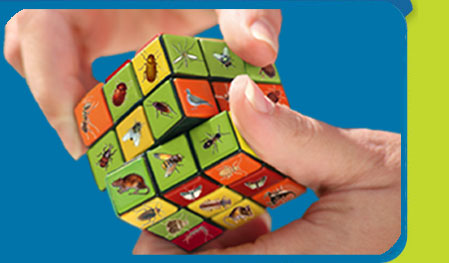Millipedes
 Millipedes belong to the Diploda family and their name means “thousand legs”, although they never have so many legs. Their body consists of 25 to 100 sections, according to species and every one of them has 2 legs. Although they have many legs, Millipedes move very slowly and when they feel in danger they coil themselves up. They can not stand high moisture, so they come out of the ground after rain, on wet Spring days and during Autumn, while they are hiding in the ground during Winter with low temperatures and Summer with high temperatures.
Millipedes belong to the Diploda family and their name means “thousand legs”, although they never have so many legs. Their body consists of 25 to 100 sections, according to species and every one of them has 2 legs. Although they have many legs, Millipedes move very slowly and when they feel in danger they coil themselves up. They can not stand high moisture, so they come out of the ground after rain, on wet Spring days and during Autumn, while they are hiding in the ground during Winter with low temperatures and Summer with high temperatures.  Millipedes are rather ugly and repulsive, but they are harmless, because they don’t bite or do any damage.
Millipedes are rather ugly and repulsive, but they are harmless, because they don’t bite or do any damage. They feed on organic matter and they prefer soils rich in lime.
Millipedes, in some cases, live up to seven years.
They spend Winter time as adults and they lay their eggs, individually or in groups, into the ground.
 Female lay 20 to 300 eggs, which hatch after a few weeks. Some of them reach sexual maturity from the second year, while others remain in larva stage for four to five years.
Female lay 20 to 300 eggs, which hatch after a few weeks. Some of them reach sexual maturity from the second year, while others remain in larva stage for four to five years. Total control o f millipedes during periods of immigration to ground surface, is very difficult.
Sprayings on building walls and areas around them can give good results.
Sprayings are performed usually with carbamide insecticides (Baygon, Ficam, Sevin) because of their quick knockdown effect. Some granular soil insecticides give good results, too.







